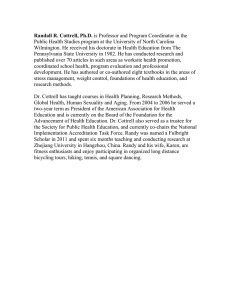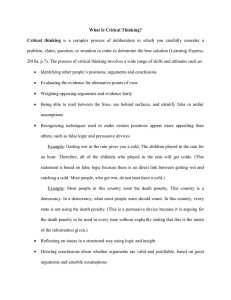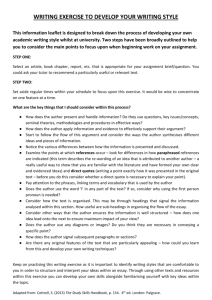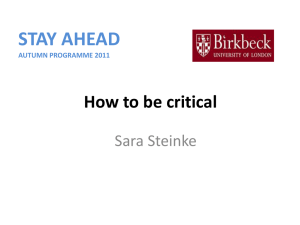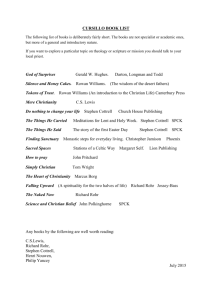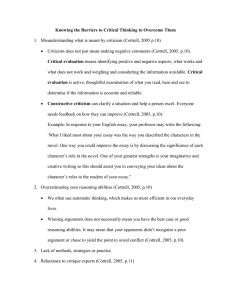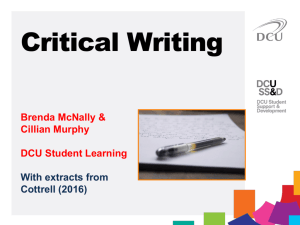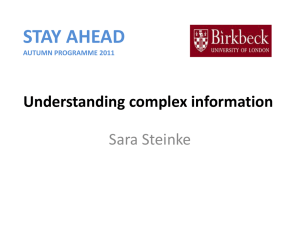Where’s the Proof?
advertisement
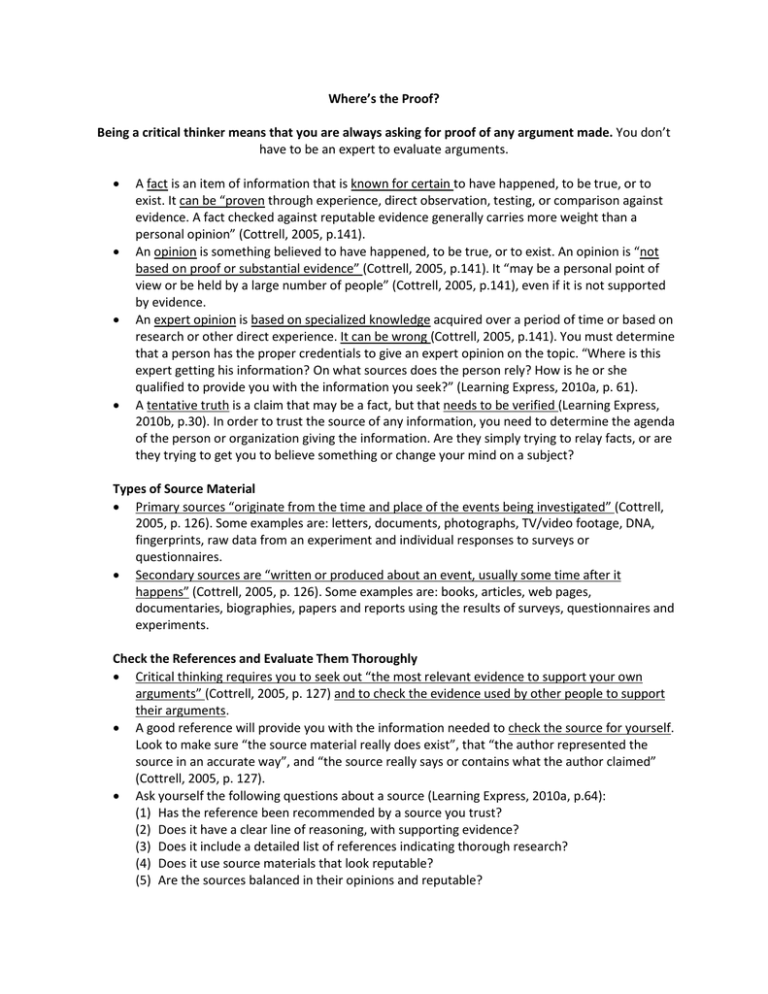
Where’s the Proof? Being a critical thinker means that you are always asking for proof of any argument made. You don’t have to be an expert to evaluate arguments. • • • • A fact is an item of information that is known for certain to have happened, to be true, or to exist. It can be “proven through experience, direct observation, testing, or comparison against evidence. A fact checked against reputable evidence generally carries more weight than a personal opinion” (Cottrell, 2005, p.141). An opinion is something believed to have happened, to be true, or to exist. An opinion is “not based on proof or substantial evidence” (Cottrell, 2005, p.141). It “may be a personal point of view or be held by a large number of people” (Cottrell, 2005, p.141), even if it is not supported by evidence. An expert opinion is based on specialized knowledge acquired over a period of time or based on research or other direct experience. It can be wrong (Cottrell, 2005, p.141). You must determine that a person has the proper credentials to give an expert opinion on the topic. “Where is this expert getting his information? On what sources does the person rely? How is he or she qualified to provide you with the information you seek?” (Learning Express, 2010a, p. 61). A tentative truth is a claim that may be a fact, but that needs to be verified (Learning Express, 2010b, p.30). In order to trust the source of any information, you need to determine the agenda of the person or organization giving the information. Are they simply trying to relay facts, or are they trying to get you to believe something or change your mind on a subject? Types of Source Material • Primary sources “originate from the time and place of the events being investigated” (Cottrell, 2005, p. 126). Some examples are: letters, documents, photographs, TV/video footage, DNA, fingerprints, raw data from an experiment and individual responses to surveys or questionnaires. • Secondary sources are “written or produced about an event, usually some time after it happens” (Cottrell, 2005, p. 126). Some examples are: books, articles, web pages, documentaries, biographies, papers and reports using the results of surveys, questionnaires and experiments. Check the References and Evaluate Them Thoroughly • Critical thinking requires you to seek out “the most relevant evidence to support your own arguments” (Cottrell, 2005, p. 127) and to check the evidence used by other people to support their arguments. • A good reference will provide you with the information needed to check the source for yourself. Look to make sure “the source material really does exist”, that “the author represented the source in an accurate way”, and “the source really says or contains what the author claimed” (Cottrell, 2005, p. 127). • Ask yourself the following questions about a source (Learning Express, 2010a, p.64): (1) Has the reference been recommended by a source you trust? (2) Does it have a clear line of reasoning, with supporting evidence? (3) Does it include a detailed list of references indicating thorough research? (4) Does it use source materials that look reputable? (5) Are the sources balanced in their opinions and reputable? (6) What are the author’s credentials on this subject? (7) What do others say about the individual writer or the group? Find More Evidence • Look for evidence to support your own arguments (Cottrell, 2005, p.127). Has anything been written already about your argument? Where can you find that information? Which sources are the best on that subject? • Browse the introductory chapter in a book (Cottrell, 2005, p.127). • Published books and periodicals that are part of your college library are usually good sources because “they are typically written, edited, proofread, fact-checked, published, and then selected for purchase” (Learning Express, 2010a, p. 60). • Ask an expert for help (like the librarian). • Visit the websites of relevant organizations. • Beware of internet search engines because they don’t always distinguish between useful sites with credible information and sites that are not credible sources. They simply list every link that seems to meet your search criteria (Learning Express, 2010a, p.58). • Do a literature search. This will give you an overview of what has been written on the topic you are interested in (secondary sources). Examine the sources using critical thinking to find out if they are well researched, trustworthy, recent, and relevant to your topic (Cottrell, 2005, p.128). • Browse the abstracts of journal articles to view the recent research in a field. The abstract is a summary that contains “the main argument, research methods, findings and conclusions” (Cottrell, 2005, p. 128). It will help you decide if you should spend the time to read the entire article. • Journal articles are usually very reputable because they have to be reviewed and selected by one’s professional peers before they can be published (Cottrell, 2005, p.129). Sources Cottrell, S. (2005). Critical thinking skills: Developing effective analysis and argument. NY: Palgrave McMillan. Learning Express (2010a). Critical thinking skills success in 20 minutes a day (2nd ed.). NY: Learning Express. Learning Express (2010b). Reasoning skills success in 20 minutes a day (3rd ed.). NY: Learning Express. This document was compiled by Shirley “Mandy” Sexton, Ph.D.
